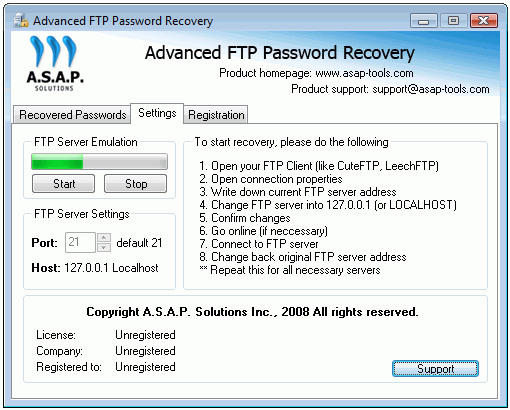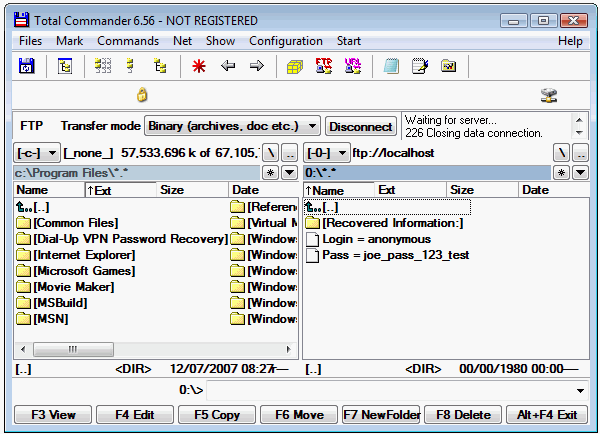

- DCOMMANDER FTP HOW TO
- DCOMMANDER FTP RAR
- DCOMMANDER FTP PASSWORD
- DCOMMANDER FTP PC
- DCOMMANDER FTP SERIES
DCOMMANDER FTP RAR
rar on your desktop! To hide files, just:
DCOMMANDER FTP PASSWORD
One reason you might opt to use Terminal is that it allows you to hide any file or folder on your Mac, which is a great way to avoid that sense of residual curiosity felt by others should they come across a password protected. It doesn’t matter too much whether you use Terminal or Finder to make the hidden files on your Mac visible, though you might prefer the latter if you’ve never run scripts on Terminal before, as both routes accomplish the same thing.
DCOMMANDER FTP HOW TO
How To Searh Whole File System For A Word On Mac Os X Terminal Commands
DCOMMANDER FTP SERIES
Terminal, a Mac command-line interface, is included in macOS by default and allows you to use command prompts to control your Mac instead of following a potentially complex series of instructions to do the same thing in Finder. How To Searh Whole File System For A Word On Mac Os X Terminal Command List Unhide files on Mac with Terminal commands

Some users have reported success finding documents that they thought were lost forever after their Mac crashed without saving, which is always a useful tip to have in the back pocket. If you’re anything like the average Mac user, most of what you’ll find will be made up of system files and autosaved Microsoft Word documents! Click on Library to open up the, normally hidden, folderīe prepared for one very cluttered looking Desktop if you decide to uncover all the hidden files there.In Finder, hold down Alt and click Go at the top of your screen.However, if you know what you’re looking for is in your ~/Library folder and would rather jump straight into that then you can take the following steps instead: This process will also work elsewhere, including your Documents or Applications folders. Your hidden files will become visible.In Finder, open up your Macintosh HD folder.In fact, you can check out all of the hidden files on your Mac by following just three easy steps: After all, these files are hidden for a reason! See hidden files on Mac via FinderĪs mentioned above, it doesn’t take much to make the hidden files on your Mac visible.

Unless you know exactly what you’re looking for you can do some serious damage to your operating system, so you’ll want to proceed with caution. There are a couple of Finder augmentation and replacement apps, for example, that make the process as easy as clicking a single button.īefore kicking off, however, it’s important to highlight that you should play it safe when digging through hidden files on your laptop or desktop. There’s good news for anyone out there who’s looking to access hidden files on their Mac: you can do exactly that, in a number of different ways, by arming yourself with a little bit of knowledge. Is it normal that 'System' takes up 90GB+ of storage? What does it contain? How to get your System folder under control? Three Ways to See Hidden Files on Mac Most of them are hidden away in the ~/Library folder, but the truth is that the average Mac holds a treasure trove of files and folders that you either no longer need or may want to access for troubleshooting purposes. There are, however, times when you need to access those files. It’s not a shock that, since those days, developers have taken more care to hide away files that are essential to their operating systems.
DCOMMANDER FTP PC
Those of us who have lived online for long enough will remember the Delete System32 hoax, with which trolls encouraged naive PC users to delete their Windows 2000 system directory. With the tools we offer, nothing gets lost in the shuffle. Try Setapp to make all your files visible on a Mac. What all of us have in common, however, is a huge range of system files that are hidden just out of view. When you look at your desktop, or inside any folder for that matter, on your Mac you’ll see a number (one that will vary depending on how well-organized you are) of file and folder icons. Get ForkLift, a smart and efficient Finder alternative.


 0 kommentar(er)
0 kommentar(er)
